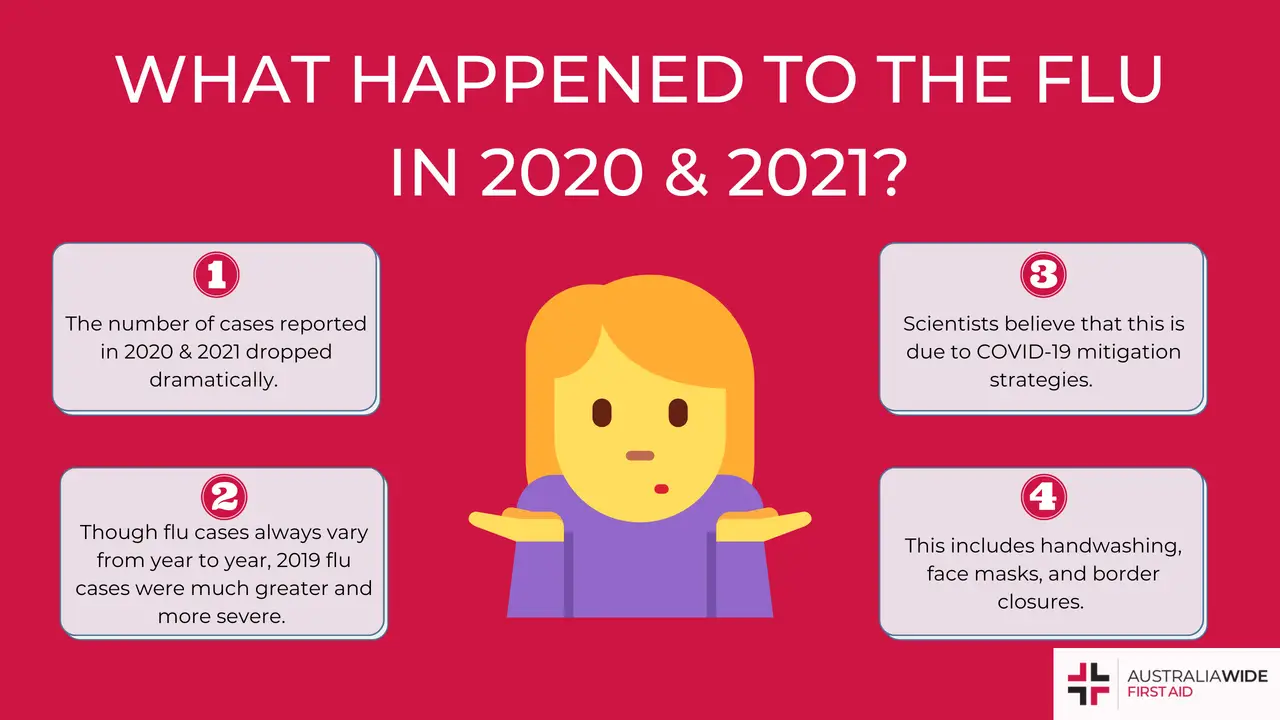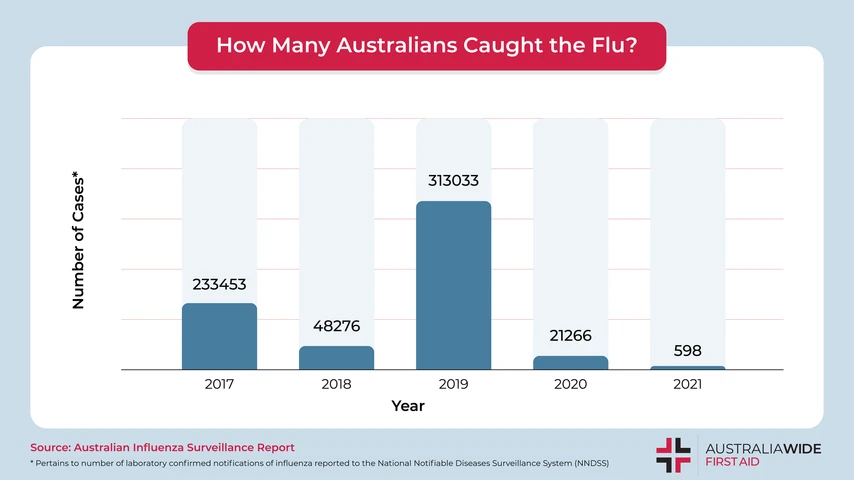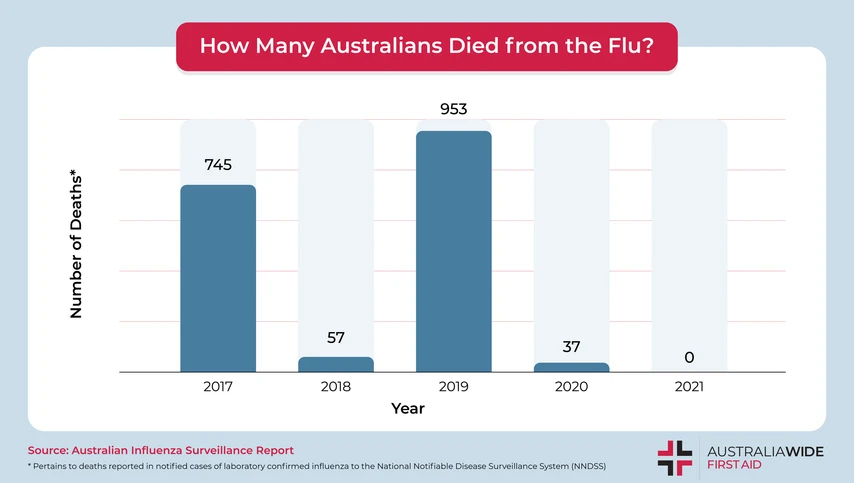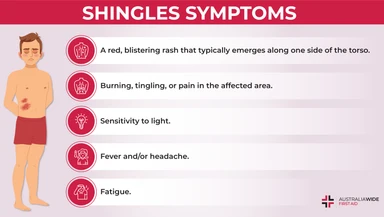What Happened to the Flu in 2020 & 2021?


If it feels like the flu has been in the news a lot lately, that’s because it has.
This year, the flu is hitting Australia hard. Since seasonal surveillance commenced in April 2022, there have been 368 hospital admissions due to influenza reported across sentinel hospital sites.
This is because our immune systems are relatively defenceless against new strains of the flu, as the disease disappeared from the planet almost entirely for the past 2 years. Today, we are going to take a closer look at how the flu fared across 2020 and 2021, and how we can manage its vengeful return.

Is this article, we are mostly going to be sourcing our statistics from the Australian Influenza Surveillance Report (AISR), which is published on a fortnightly basis during the influenza season, typically between May and October.
According to AISR’s National Summary for the 2020 Influenza Season, there were 21,266 notifications of laboratory confirmed influenza to the National Notifiable Diseases Surveillance System (NNDSS).
This number dropped even further in the 2021 Influenza Season. According to the surveillance report for the fortnight ending 7 November 2021, only 598 notifications of laboratory-confirmed influenza had been reported to the NNDSS in the preceding year.
Though the breadth and severity of flu season can change from one year to the next, given flu viruses can change their surface structure and reinfect people regularly, these figures represent mammoth drops from pre-COVID-19 case numbers.
According to AISR’s National Summary on the 2019 Influenza Season, there were 313,033 notifications of laboratory-confirmed influenza to the NNDSS. As such, the number of influenza cases reported in 2020 represent a decrease of approximately 93% compared to 2019 figures. Meanwhile, the number of influenza cases reported in 2021 represent a decrease of approximately 99.8% compared to 2019 figures.

Per AISR’s National Summary for the 2020 Influenza season, there were 37 influenza-associated deaths reported to the NNDSS in the year to date. As such, of the 21,266 influenza cases that were reported to the NNDSS in 2020, only 0.17% resulted in death.
This number fell even further in the 2021 Influenza Season, with AISR’s surveillance report for the fortnight ending 7 November 2021 showing that no influenza-associated deaths had been reported to the NNDSS for the preceding year. In fact, across the country’s sentinel hospital sites, only one hospital admission due to influenza had been reported since the commencement of AISR’s surveillance in April 2021.
Meanwhile, AISR’s National Summary on the 2019 Influenza Season shows that 953 of the influenza cases reported to the NNDSS resulted in death. Though this only accounts for 0.3% of the total number of influenza cases reported to the NNDSS for 2019, it still represents a 43% increase on the ratio of influenza deaths reported in 2020, and a 100% increase on the ratio of influenza deaths reported in 2021.
Scientists widely believe that the flu all but disappeared in 2020 and 2021 due to the restrictions put in place to reduce the spread of COVID-19. This includes:
As most news outlets have been reporting lately, Australia’s current flu season is proving to be incredibly deadly. Since AISR commenced its surveillance in April 2022, 38,743 influenza cases have been reported to the NNDSS, and three of these have resulted in deaths. This time last year, only 294 influenza cases had been reported to the NNDSS, none of which resulted in deaths.
Dr Kirsty Short, a virologist at the University of Queensland, told the ABC that we are currently more susceptible to flu viruses as we have gone a couple years “without the natural boost to our immunity that seasonal flu provides”.
Likewise, Professor Ian Barr, the deputy director of the WHO Collaborating Centre for Reference and Research on Influenza, told the ABC that, due to the low number of flu cases in 2020 and 2021, it has been difficult to source samples with which to develop new flu vaccines. New flu vaccines are introduced on a regular basis, as the flu can change its surface structure and re-infect people from one year to the next.
During the height of the COVID-19 pandemic in 2020 and 2021, the number of flu cases reported in Australia dropped dramatically.
This is because the preventative measures that were introduced to reduce the spread of COVID-19, such as handwashing, wearing a face mask, and closing domestic and international borders, simultaneously reduced the spread of the flu.
As we have gone a couple of years without an intensive flu season, our natural immunity against the flu is waning. As such, it is important to understand how to prevent, identify, and manage flu symptoms before they become severe. Book a first aid course near you to find out more.

October 28, 2022
Shingles is a viral infection that can occur in anyone who has had chickenpox. It's most distinct symptom is a painful, blistering rash that occurs on one side of the body. Without prompt treatment, shingles can have life-threatening complications.

August 4, 2022
The Australian Bat Lyssavirus (ABLV) forms part of the same family as the rabies virus. ABLV infects all four species of fruit bats and flying foxes in Australia. In humans, ABLV can cause respiratory difficulties, coma and, in most cases, death.

June 10, 2022
Flu viruses can change their surface structure from one year to the next. As such, new flu vaccines are developed each year. Flu vaccines comprise numerous ingredients that aid their development, purity, and efficacy.